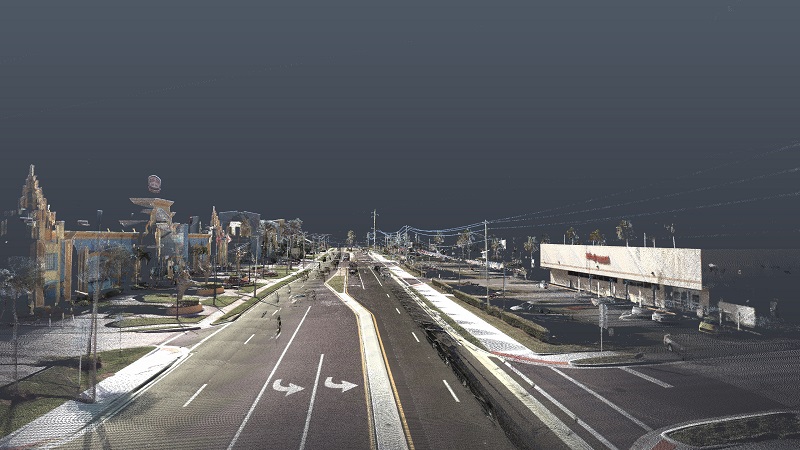
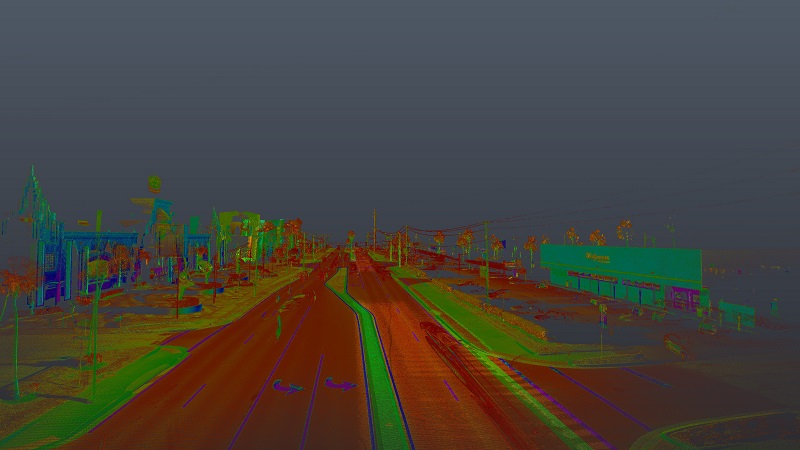
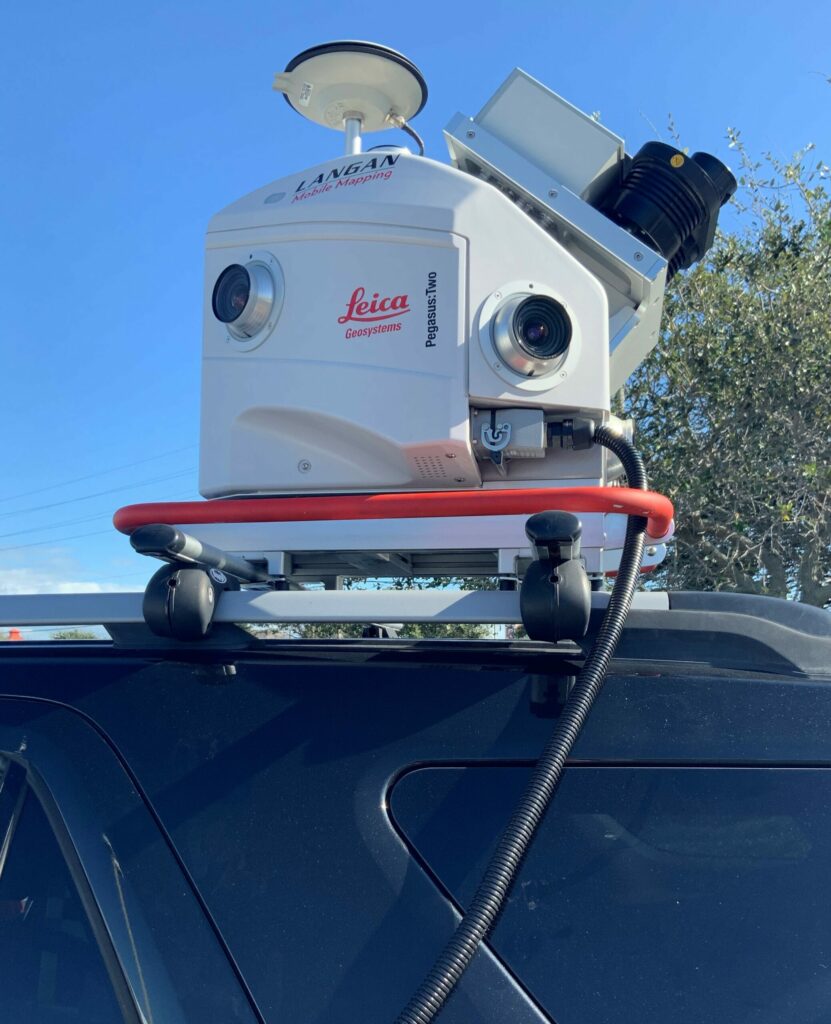
MemoryScan
An NEH Project
Typically we laser scan a single building for our projects, capturing the larger ‘life history’ of the building by conducting extensive research on the evolution of the structure and its connection to the larger community. We thought what if we expanded the concept and captured a significant portion of a thoroughfare? With MemoryScan we laser scanned a 10km section of State Road A1A in the City of Cocoa Beach and its intersection with State Road 520. While this area is the commercial heart of Cocoa Beach today, it represented the city’s connection to the space and missile industry in the 1950s and 1960s. Along these two avenues stood buildings directly associated with Cape Canaveral contractors such as Boeing and Pan American, but more importantly it is here where you would find buildings with Space-Age names like the Satellite and Vanguard Motels or the Apollo Building. Today, many of these structures no longer exist or have undergone significant modification. This project seeks to capture a 3D representation of the avenues today and incorporate depictions from this earlier era – it is our Cocoa Beach Glass Bank project on a much larger scale.
Langan Engineering used their Leica Pegasus Two Mobile Sensor Platform to capture this 10 km portion of Cocoa Beach along State Road A1A and State Road 520. While the Pegasus Two was capturing the scan while driving the speed limit in Cocoa Beach, it can capture in excess of 55 mph.
SENSEable Design Lab received an NEH – Digital Humanities Advancement Grant and an ER: Exploratory Research Award from UCF, Office of Research to conduct initial work on the MemoryScan project.
The National Endowment for the Humanities: Democracy demands wisdom.
We would like to thank Langan Engineering and Environmental Services Inc.
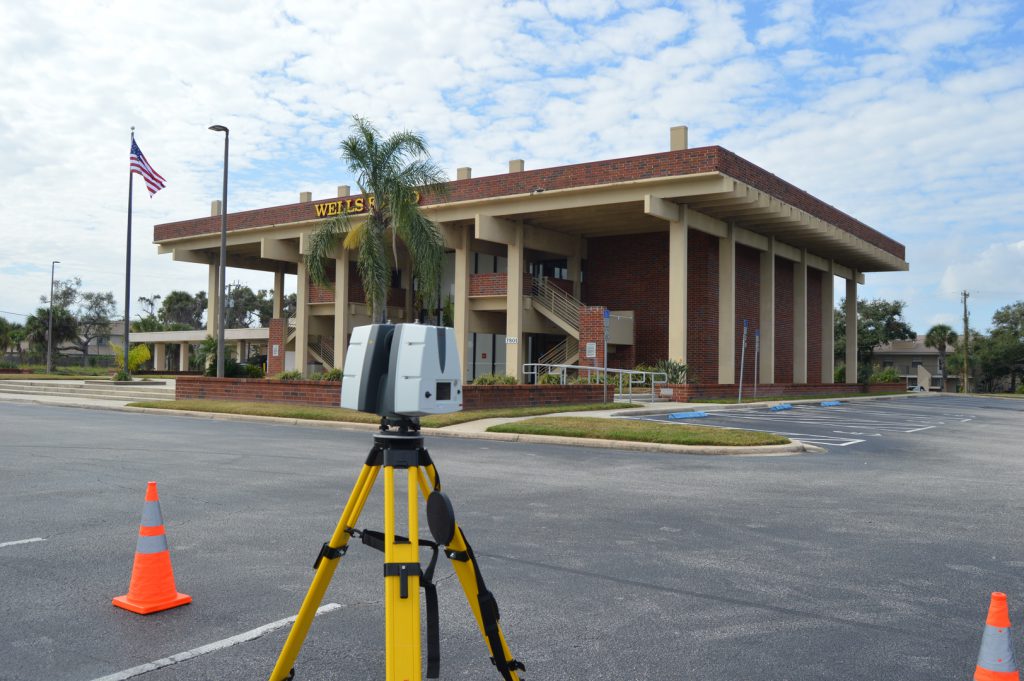

ChronoPoints
Laser Scanning History
ChronoPoints is a component of the SENSEable Design Lab at the University of Central Florida’s IST, School of Modeling, Simulation & Training dedicated to digitally documenting historically significant structures and artifacts. Our mission is to record a structure’s “life history” through the capture of digital data and by contextualizing it through contemporaneous photographs, documents, and oral histories of individuals associated with the artifact or building.

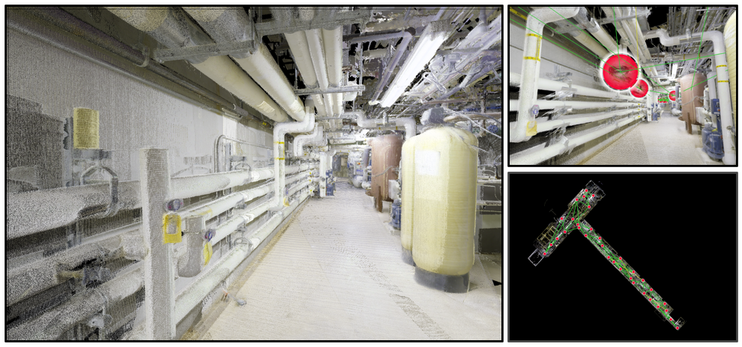
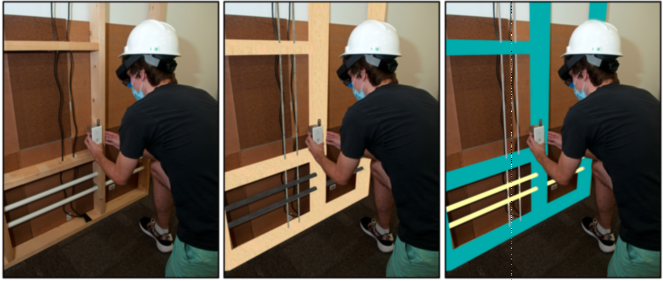
Retraining Built Environment Retrofitting Problem Solving Skills with Augmented Reality
A National Science Foundation Project
Emerging Augmented Reality (AR) and Building Information Modeling (BIM) technologies can be integrated to potentially increase human performance by improving the retraining of construction workers for retrofitting and repurposing buildings. A widely recognized problem is the growing population of displaced construction and maintenance workers due to automation and artificial intelligence. Additionally, the U.S. demolishes and replaces one billion square feet of building stock with new structures, with the impact of the waste produced and its environmental cost. Retrofitting construction projects are gaining in popularity because they increase a structure’s lifespan, preserve historic elements, and minimize waste. This project addresses these critical needs by studying how to help workers transfer trade skills and effectively increase their problem-solving skills for retrofitting and repurposing building structures.
A novel interdisciplinary approach explores how AR devices can superimpose BIM visual information to gain a better and safer understanding of retrofitting and maintenance issues. We hope this will pave the way for broad use and adoption of AR and BIM to solve building retrofitting and maintenance challenges and improve workforce capabilities.
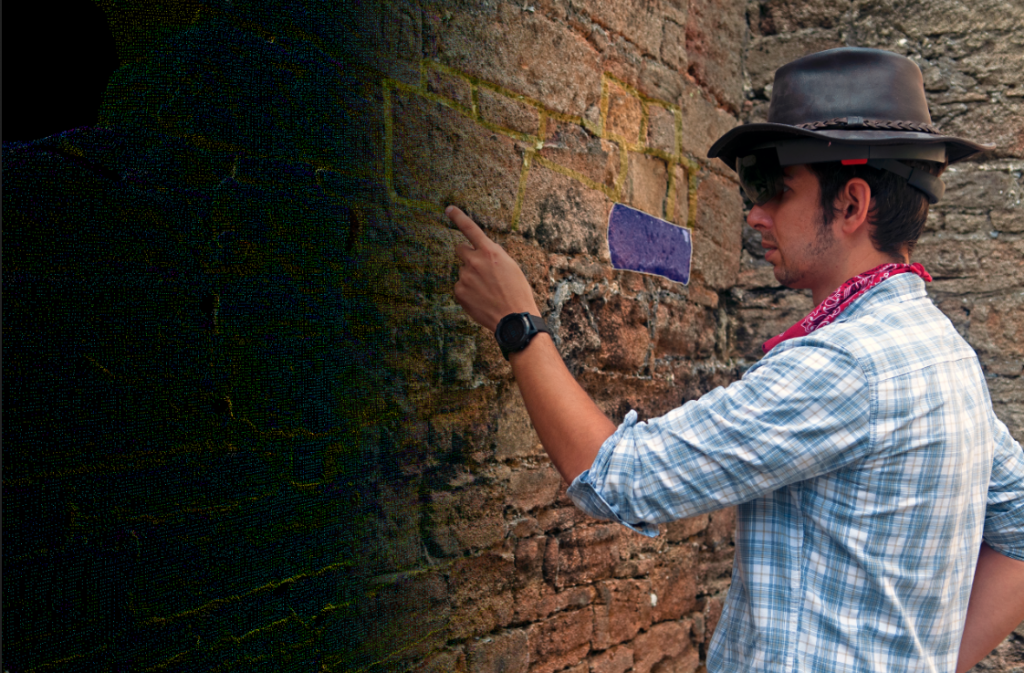

Documenting and Triaging Cultural Heritage (DATCH)
A National Endowment for the Humanities Project
The Documenting and Triaging Cultural Heritage (DATCH) project will develop prototype open-source software for field assessment and documentation of built and movable cultural heritage using mixed reality hardware with or without network connections. It will permit real-time overlay comparisons of cultural heritage against earlier documentation while also enabling the creation of new scaled drawings using gestures, even in field situations with no network connections. When network connections are available additional features such as video calls with specialists and data sharing with management systems will be enabled. DATCH will aid rapid needs assessments of cultural heritage in conflict situations, ongoing assessments of cultural heritage in the field, and enable fieldwork across multiple disciplines.
BIM Driven Retrofitting Design Evaluation of Building Facades
John Sermarini, Robert A. Michlowitz, Joseph J. LaViola, Lori C. Walters, Roger Azevedo, and Joseph T. Kider Jr.
Proceedings of the 2022 ACM Symposium on Spatial User Interaction, 2022
Coherent Vorticity and Discontinuous Flow in Particle-Based SPH Modeling
Oddny H. Brun, Joseph T. Kider, and R. Paul Wiegand
International Journal of Computational Methods and Experimental Measurements, 2022
MemoryScan: Smart Digital Transformation of Large-Scale Environments for Eliciting Location Specific Knowledge
Robert A. Michlowitz, Joseph T. Kider, and Lori C. Walters
2022 IEEE International Symposium on Mixed and Augmented Reality Adjunct, 2022
PARTICLE-BASED FLOW VORTICITY ANALYSIS BY USE OF SECOND-GENERATION WAVELETS
Oddny H. Brun, Joseph T. Kider, and R. Paul Wiegand
CMEM 2021, 2021
A Critical Review of the Effectiveness of the Sustainability Tracking, Assessment & Rating System (STARS) Framework on Campus Sustainability
Lauren E. Doocy, Arash Zarmehr, and Joseph T. Kider Jr.
Proceedings of Building Simulation, 2021
A Kinematic Evaluation of Linear and Parabolic Pointing in Virtual Reality
John Sermarini, Joseph T. Kider, Joseph J. LaViola, and Daniel S. McConnell
Proceedings of the Human Factors and Ergonomics Society Annual Meeting, 2021
Embodied Facade Retrofit Design with Augmented Reality in the Built Environment
John Sermarini, Robert A. Michlowitz, Joseph J. LaViola Jr., Lori C. Walters, Roger Azevedo, and Joseph T. Kider Jr.
Proceedings of Building Simulation 2021, 2021
Radiant Spectral Energy for Simulation in the Built Environment
Joseph Del Rocco, and Joseph T. Kider Jr.
Proceedings of Building Simulation 2021, 2021
Whole-Building Energy Simulation Analysis and Optimization of Residential Building Equipped with Air-Duct System in Three Different Regions
Arash Zarmehr and Joseph T. Kider Jr.
Proceedings of Building Simulation 2021, 2021.
Real-time spectral radiance estimation of hemispherical clear skies with machine learned regression models
Joseph Del Rocco, Paul Bourke, Charles B. Patterson, Joseph T. Kider Jr.
Solar Energy, 2020
Simulation Analysis of a Ventilated Building Integrated-Photovoltaics Air-Gap Duct System for Natural Ventilation of a Building
Arash Zarmehr, Joseph T. Kider Jr.
Building Simulation, 2019
Transition Portal for daylighting calculations in early phase design
Joseph T. Kider Jr., Bruce Walter, Sandy Fang, Ege Sekkin, Donald P. Greenberg
Energy and Buildings, 2019
Robust Path Matching and Anomalous Route Detection Using Posterior Weighted Graphs
Lauren Doocy, Steven D. Prager, Joseph T. Kider Jr., R. Paul Wiegand
ACM Transactions on Spatial Algorithms and Systems (TSAS), 2019
Accurate graphics BRDF material properties and illumination for dirt and mudbrick structures
Emiliya Al Yafei, Virginia Badler, Norman I. Badler, Joseph T. Kider Jr.
International Conference on Cultural Heritage and New Technologies, 2019
Learning and estimating whole sky visible, VNIR, SWIR radiance distributions from a commercial camera
Joseph Del Rocco, Charles Brandon Patterson, Hassen Dhrif, Joseph T. Kider Jr.
SPIE Optics and Photonics for Information Processing XII, 2018
An affective kinetic building facade system – Mood Swing
Nathan Moulton, Joseph Del Rocco, Joseph T. Kider Jr., Stephen M. Fiore
Advanced Building Skins (ABS), 2018
Modeling and Simulation of Parametric Wind-Catcher Designs for Natural Ventilation in Sustainable Building Skin Architecture
Arash Zarmehr, Joseph T. Kider Jr.
Advanced Building Skins (ABS), 2018
Temporal IR Energy Maps for Synthetic Virtual Training
Joseph T. Kider Jr., Mark Faulk, Ron Moore, Julian Barriga, Jerred Holt
Interservice/Industry Training, Simulation, and Education Conference (I/ITSEC) , 2018
RoMA Interactive Fabrication with Augmented Reality and a Robotic 3D Printer
Huaishu Peng, Jimmy Briggs, Cheng-Yao Wang, Kevin Guo, Joseph T. Kider Jr., Stefanie Mueller, Patrick Baudisch, François Guimbretière
Proceedings of the 2018 CHI Conference on Human Factors in Computing Systems (CHI ’18), 2018
Accurate Soil and Mudbrick BRDF Models for Archaeological Illumination Rendering with Application to Small Finds
Virgina Badler, Joseph T. Kider Jr , Megan Moore, Bruce Walter, Norman I. Badler
EUROGRAPHICS Workshop on Graphics and Cultural Heritage (GCH), 2017
A Framework for the Experimental Comparison of Solar and Skydome Illumination
Joseph T. Kider Jr., Daniel Knowlton, Jeremy Newlin, Yining Karl Li, and Donald P. Greenberg
ACM Transactions on Graphics (SIGGRAPH ASIA), 2014
Efficient Motion Retrieval in Large Motion Databases
Mubbasir Kapadia, I-kao Chiang, Tiju Thomas, Norman I. Badler, Joseph T. Kider Jr.
Interactive 3d Graphics and Games (I3D), 2012
Fruit Senescence and Decay Simulation
Joseph T. Kider Jr, Samantha Raja, and Norman I. Badler
Eurographics, 2011
A Data-driven Appearance Model for Human Fatigue (HONORABLE MENTION AWARD)
Joseph T. Kider Jr, Kaitlin Pollock, and Alla Safonova
SIGGRAPH/ Eurographics Symposium on Computer Animation (SCA), 2011
Intelligent Camera Control using Behavior Trees
Daniel Markowitz, Joseph T. Kider Jr., Alexander Shoulson, and Norman I. Badler
Motion in Games (MIG), 2011
Human Model Reaching, Grasping, Looking and Sitting using Smart Objects
Damian Slonneger, Matthew Croop, Jeremy Cytryn, Joseph T. Kider Jr.,Richard Rabbitz, Eric Halpern, Norman I. Badler
International Symposium on Digital Human Modeling (DHM), 2011
CRAM it! A Comparison of Virtual, Live-Action and Written Training Systems for Preparing Personnel to Work in Hazardous Environments
Catherine Stocker, Ben Sunshine-Hill, John Drake, Ian Perera, Joseph T. Kider Jr., Norman I. Badler
IEEE International Conference on Virtual Reality (VR), 2011
High-dimensional Planning on the GPU
Joseph T. Kider, Mark Henderson, Maxim Likhachev, Alla Safonova
IEEE International Conference on Robotics and Automation (ICRA), 2010
Real-time Evacuation Simulation in Mine Interior Model of Smoke and Action
Pengfei. Huang, Jinsheng Kang, Joseph T. Kider Jr., Benjamin Sunshine-Hill, Jon McCaffrey, Desiree Rios, Norman Badler
Computer Animation and Social Agents, 2010
Recreating Early Islamic Glass Lamp Lighting (BEST PAPER AWARD)
Joseph T. Kider Jr., Rebecca L. Fletcher, Nancy Yu, Renata Holod, Alan Chalmers, and Norman I. Badler
International Symposium on Virtual Reality, Archaeology and Cultural Heritage (VAST), 2009
All-Pairs Shortest-Paths for Large Graphs on the GPU (10 year TEST OF TIME AWARD)
Gary Katz and Joseph T. Kider Jr
Graphics Hardware, 2008